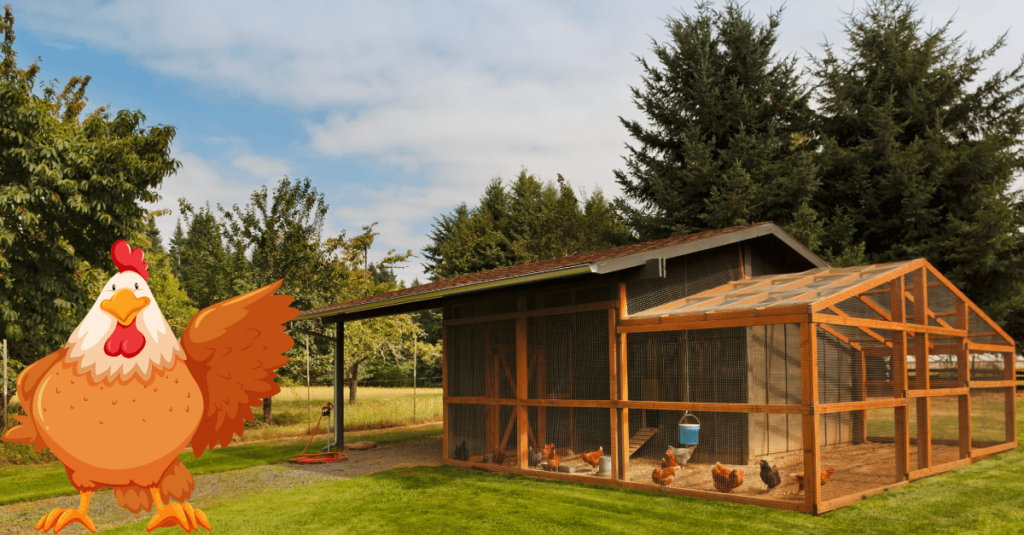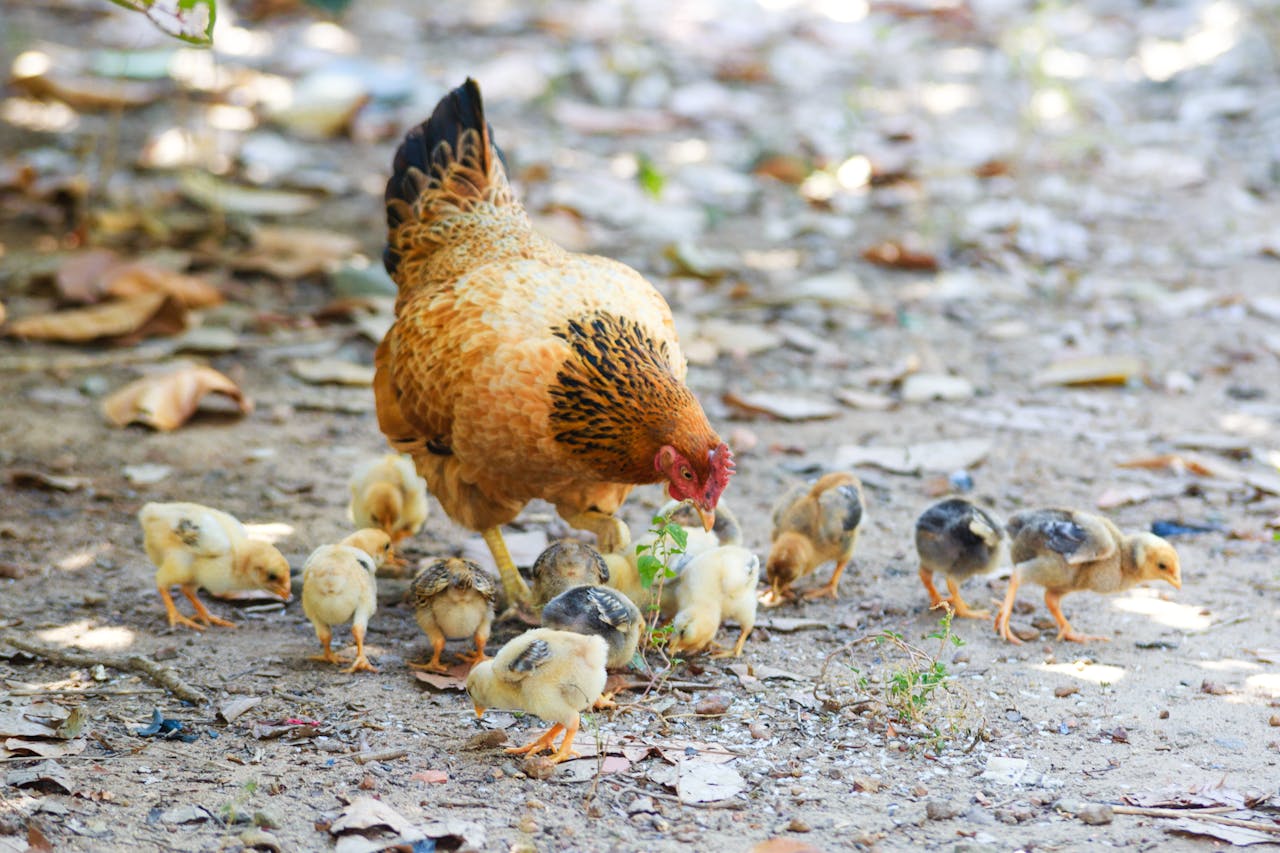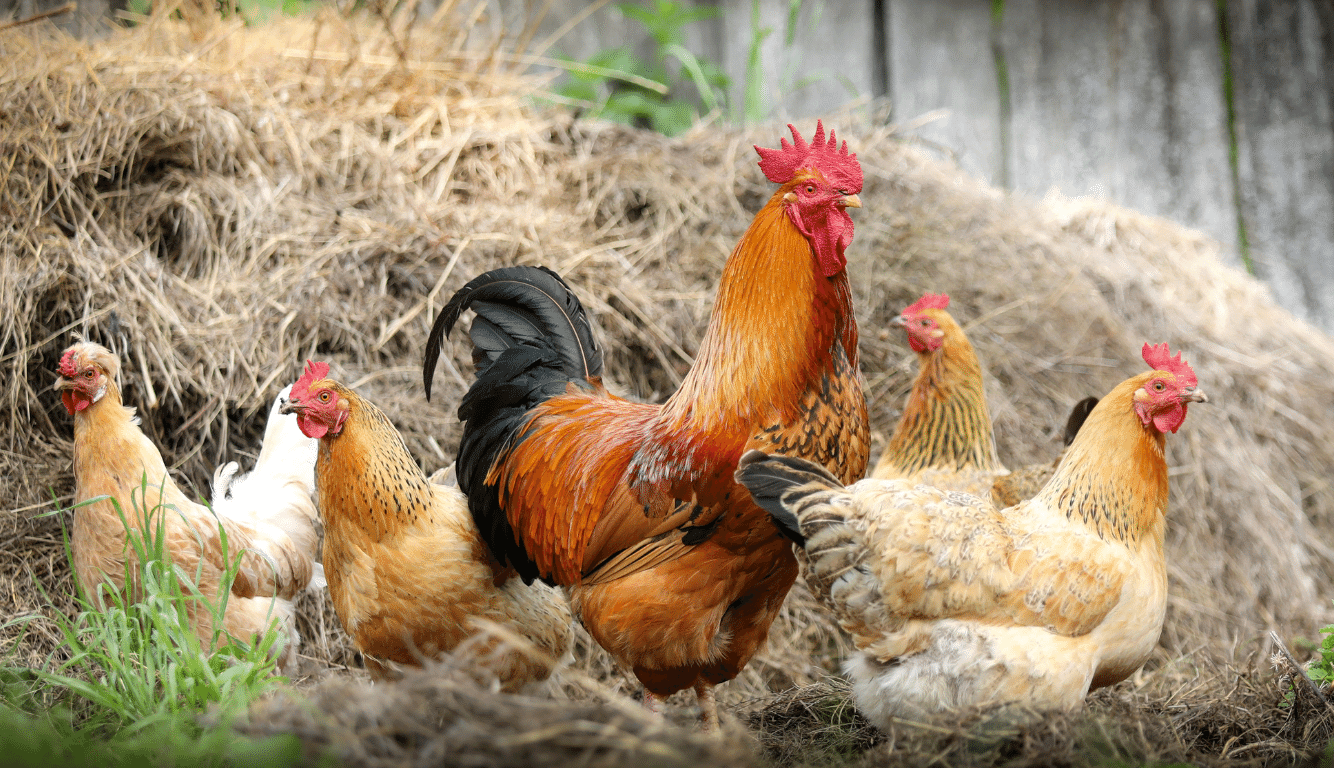Introduction
Have you ever woken up to the gentle clucking of chickens and the promise of fresh eggs for breakfast? If not, you’re missing out on one of life’s simple pleasures. The increasing interest in backyard poultry has more and more folks rolling up their sleeves to create cozy homes for their feathered friends. And why not? Chickens are not only providers of delicious eggs but also amusing pets with personalities bigger than their cluck.
The Increasing Popularity of Backyard Poultry
In recent years, the trend of raising backyard chickens has soared. People are seeking closer connections to their food sources, desiring organic living, and yearning for the rewarding experience of caring for animals.
Benefits of Having a Chicken Coop with Run
A chicken coop with a run offers the best of both worlds for your chickens: security and freedom. They can enjoy the sunshine, peck at the ground freely, and yet remain safe from predators.
The Purpose of This Guide
This comprehensive guide aims to walk you through every step of the journey — from planning to maintenance, considering the well-being of your chickens, and ensuring their safe, happy, and productive living.
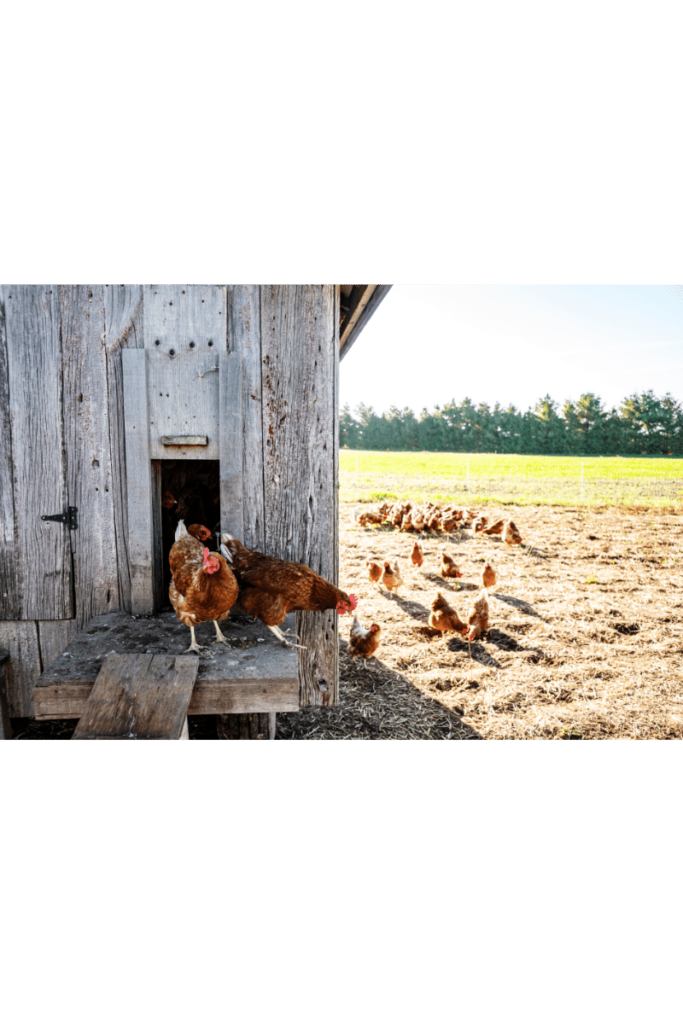
Planning Your Chicken Coop and Run
Before diving into construction, it’s crucial to plan carefully.
Understanding Space Requirements
Chickens need space–not just to live but to thrive. Crowding can lead to stress, disease, and feather pecking.
- Minimum Space Per Chicken in Coops: Aim for at least 3-4 square feet per chicken inside the coop.
- Sizing the Run for Healthy Chickens: For the run, allocate a minimum of 8-10 square feet per chicken.
Adapting Space Based on Chicken Breed
Different breeds have different space and environmental needs. For example, larger breeds like the Jersey Giant will need more space than bantams.
Choosing the Right Location
Your coop and run’s location can significantly impact your chickens’ health and happiness.
- Sunlight and Shade Considerations: Ensure the coop gets natural light yet is shielded from the harsh afternoon sun.
- Protection from Predators and Extreme Weather: High ground helps to avoid flooding, and secure fencing keeps predators at bay.
- Proximity to Your House for Easy Access: You’ll be visiting your coop at least twice a day, so don’t position it too far away.
Design Options for Coops and Runs
Pre-fabricated Vs. DIY Coops and Runs
Prefab coops are convenient, while DIY offers customization. Consider your skills, budget, and time when choosing.
Features to Look for in a Good Chicken Coop
- Ensuring Adequate Ventilation and Insulation: Ventilation keeps the air fresh, and insulation protects from extreme temperatures.
- Choosing Durable and Safe Materials: Use materials that are sturdy and safe for chickens.
- Budgeting for Your Project: Costs can vary widely, so set a realistic budget.
Building Your Chicken Coop with Run
Ready to build? Let’s get into the nitty-gritty.
Essential Tools and Materials
- List of Necessary Tools: Basic carpentry tools will do – a hammer, saw, drill, and measuring tape.
- Choosing Durable and Safe Materials: Cedar wood is durable and naturally repels pests. Avoid treated wood, which can be toxic to chickens.
Step-by-Step Construction Guide
- Laying the Foundation: Start with a solid, predator-proof base.
- Constructing the Frame and Walls: Ensure it’s sturdy and weatherproof.
- Adding Doors, Roofs, and Windows: Provide easy access, protection from the elements, and sufficient light.
Finishing Touches
- Securing the Run with Proper Fencing: Use hardware cloth rather than chicken wire for better protection.
- Installing Roosts and Nesting Boxes: Roosts for sleeping, nesting boxes for laying.
- Implementing Waste Management Solutions: Consider a deep litter method or regularly scheduled cleanings.
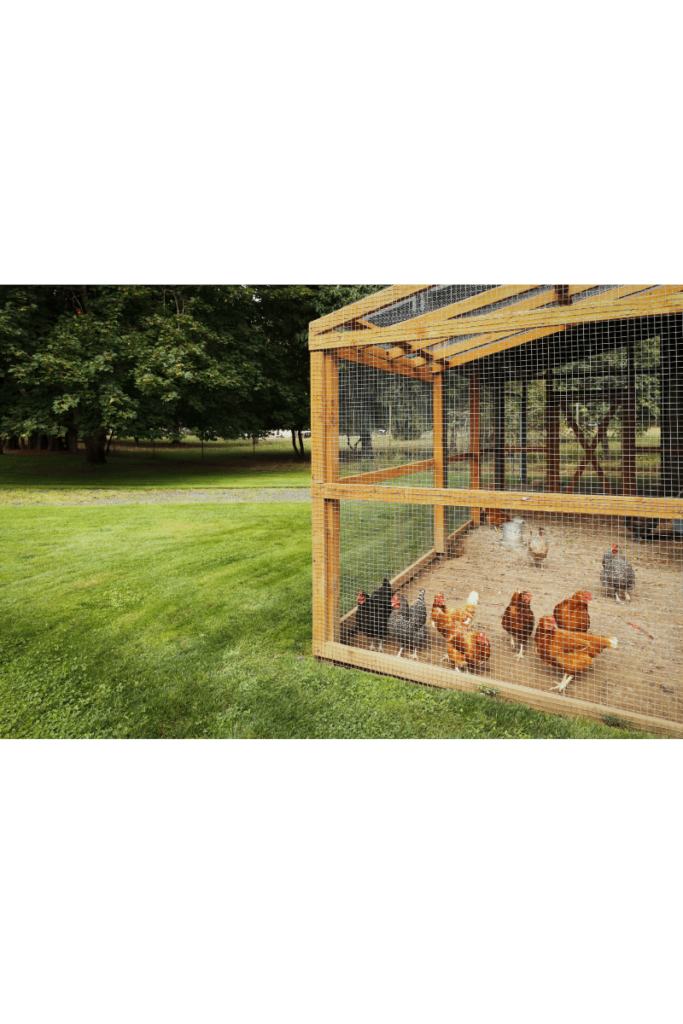
Maintenance and Care for Your Chicken Coop with Run
A clean coop is a happy coop. Here’s how to keep it in tip-top condition.
Regular Cleaning and Upkeep
- Cleaning Schedule for Coop and Run: Daily spot cleans, with a deep clean every few weeks.
- Safe and Effective Cleaning Supplies: Use vinegar for a natural clean.
Ensuring Chicken Health and Safety
- Recognizing Signs of Distress in Chickens: Lethargy, lack of appetite, or unusual behavior can be signs of disease.
- Protecting Your Flock from Predators and Weather: Secure the coop, particularly at night, and ensure it’s weather-tight.
Feeding and Nutrition
Basics of Chicken Nutrition
A balanced diet is crucial. Ensure your chickens have access to fresh water, grains, proteins, and greens.
Designing a Feeding Schedule
Regular feeding times ensure healthy eating habits. Plus, supplementing with kitchen scraps can provide additional nutrients and variety.
Innovations and Enhancements for Your Coop and Run
Technology and Smart Coop Accessories
- Automated Feeding and Watering Systems: Simplify daily chores.
- Implementing Coop Cameras for Security: Keep an eye on your flock, even when you’re not there.
Enrichment Ideas for Happy Chickens
- Adding Perches, Dust Baths, and Toys: Enhance their environment with elements that encourage natural behaviors.
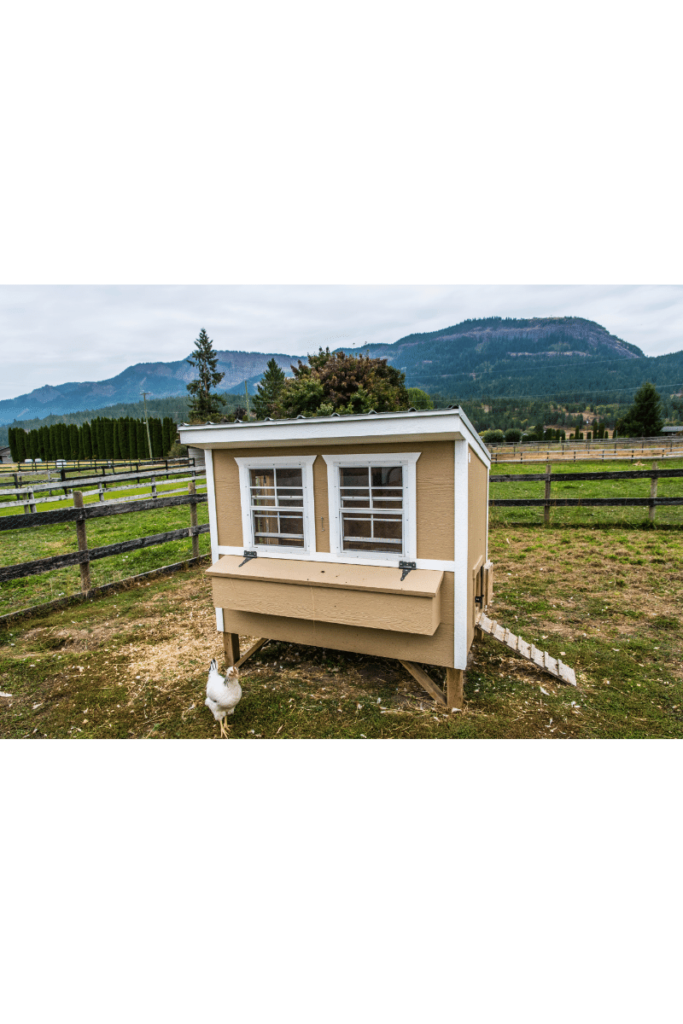
Creative Aesthetics and Customizations
Turn your coop into a backyard feature that’s as fun to look at as it is functional.
- Painting and Decorating Your Coop: Choose non-toxic paints in fun colors.
- Landscaping Around the Coop and Run: Create a beautiful, practical space.
Conclusion: Reaping the Rewards of Your Effort
Building and maintaining a chicken coop with a run is no small feat. But, the joy of raising chickens, the contribution to sustainability and organic living, and the sense of community among poultry enthusiasts make every effort worth it. Watch as your backyard transforms into a bustling hub of feathered activity, where every day brings a new adventure.
Frequently Asked Questions
How many chickens should I start with in my backyard?
- Start small. Three to six chickens offer a manageable introduction to poultry keeping.
What are the most critical features a chicken coop must have?
- Adequate space, ventilation, predator protection, and easy access for cleaning are paramount.
How often should the chicken coop and run be cleaned?
- Perform spot cleaning daily with a more thorough clean every few weeks.
Can I leave my chickens in the coop run all day?
- Yes, as long as it’s secure and they have access to food, water, and shelter.
What should I do to prepare my chicken coop for winter?
- Ensure the coop is insulated, well-ventilated, and free from drafts. Consider a light source to warm the coop slightly and encourage laying.
Embrace the journey of backyard chicken keeping, and enjoy the chirps and charms of your feathered friends!

